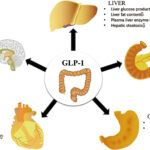.jpg)
Success in our fast-paced digital world is all about staying up-to-date on the latest digital trends and having the guts to make changes and take risks. Now that we’re well into the new year, it may be time to re-examine our 10 social forecasts from the winter. Which are producing fruit? Which are blooming quicker than expected? Here are our top 3 updated trends that are making big waves and should not be ignored.
Contents
1. DON’T BE FOOLED BY THE NAME, MICRO-VIDEO IS BIG
Towards the end of 2015, social networks became more focused on re-inventing video than ever before. From Instagram’s new video application Boomerang to Twitter’s ScratchReel feature and Pinterest’s Cinematic Pins, mini video is being pushed aside in favor of ultra-short “mini-micro” sequences.
Sometimes brands and media employ these new functionalities and sometimes they create their own micro videos. For example, many fitness brands are making 1-minute micro training circuits for fast-paced consumers. Likewise, Tastemade, is transitioning from 3-minute videos to 20-second micro videos to support their thriving community of food and travel lovers.
What’s the key takeaway? Don’t be fooled by the name. “mini-micro” is making a huge splash. And if you underestimate its influence, you’re selling your brand and your social strategy short.
2. THE YEAR OF DISTRIBUTED CONTENT AND SOCIAL WALLED GARDENS
To be honest, we didn’t expect this one to explode in 2016 the way that it has (nobody’s perfect).
Here’s what you need to know…
Over the past few years, search engines and social media have supplanted publisher websites as the destination for online news. But why serve as a channel for publishers to share links when you can push them to publish their content directly on your platform? News creates habits and habits create people who return to your platform and engage. The most prominent example would be Facebook’s Instant Articles which will be opening to the public in just a few days. But there are many other examples as well, like Twitter’s Beyond 10k, Linkedin’s Pulse, Apple News, and Google AMP.
Back in August, BuzzFeed announced the creation of a new team called Buzzfeed Distributed – 20 staffers who’ll “make original content solely for platforms like Tumblr, Imgur, Instagram, Snapchat, Vine and messaging apps”. In other words, a team of people producing content that will never be published on buzzfeed.com.
With all the opportunities created by “distributed media”, brands will need to adapt to this huge online shift while remaining cautious not put all their eggs in the same basket. Perhaps Niemans Blog said it best: “Is the hunt for readers enough to justify losing some independence?”
3. SELLING? WHO’S SELLING? UX ADVERTISING TURNS BRANDS, INTO TRUSTED NEIGHBORS
As we pointed out in our 10 social media trends for 2016, the number of Internet users who employ ad blockers increased 41% over the last 12 months. It’s a phenomenon that shook many social networks who rely exclusively on advertising revenue to support their platform.
To address these issues, specialized cells have emerged at YouTube (Zoo), Twitter (Brand Strategy), and Instagram (Creative Shop). They offer free counsel to brands in the design of non-intrusive ad formats adapted to the customs, codes, and specificities of each social network.
Examples include, ‘Native Advertising’ and ‘Branded Stickers’. Native Advertising involves sponsored or branded content that matches the look and feel of publisher websites. While Branded Stickers are a new generation of emoji that allow brands to penetrate the private area of mobile messaging.
Companies such as Snaps, Feeligo, and Swift Media all assist brands in crafting their own stickers. Plus, they are partnering with messaging apps like Kik, WhatsApp, and Facebook Messenger to have their branded emoticons available for consumer use. Furthermore, Facebook is working on a library of profile picture frames so users can download and use them to support their teams and show brand support.
The result is a new form of advertising called “UX Advertising,” short for User Experience. It is a non-intrusive, opt-in experience, where UX advertising turns brands into trusted neighbors.
2016 is shaping up as the year of building enriching digital relationships between brands and consumers. If you choose to ignore the changing tides of brand marketing, you risk losing touch with your consumers and falling behind the competition.
[Source:- Socialmediatoday]










